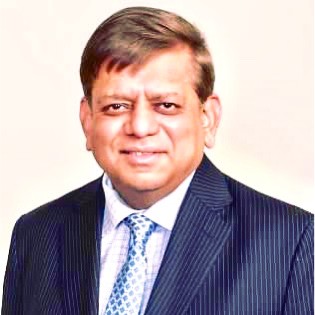- Video Library
- Dusty Majumdar, PredxBio - Spatial Analytics & AI for Precision Pathology | LSI USA '24
Dusty Majumdar, PredxBio - Spatial Analytics & AI for Precision Pathology | LSI USA '24

Dusty Majumdar
Transformative business leader with deep senior management experience across Healthcare and Biopharma. Managed large-scale businesses at Fortune 500 companies and start-ups as Chief Strategy and Business Officer across oncology, medical imaging, genomics, population health and AI in organizations including at IBM, GE Healthcare, Exact Sciences, and ASCO. Demonstrated wide-ranging success in highly regulated industries like Healthcare and BioPharma, balancing strategic thinking with overseeing flawless-execution of tactics to accelerate performance, drive commercial success, build world-class teams, and improve patient care.
Deep experience in managing functions including Marketing & Communications, Innovation, Business Development, Corporate Development (M&A), Data Analytics and Digital.
Provides inspirational leadership to marketing teams in a hands-on/executional manner to create solid business outcomes through positioning and launching of disruptive, market-leading products. Provides thought leadership, innovative stewardship and governance in all areas of digital marketing keeping customer experience at the heart of all initiatives.
Recognized for market excellence and thought leadership throughout his career with key awards and invitations to keynote forums, the most recent ones being The Economist War on Cancer, MIT Plenary Lecture on AI in Healthcare (Sloan Business School), Heroes of Healthcare Award at VNA (covered by Boston Globe) and KPMG session on AI in Healthcare.
Dusty Majumdar
Transformative business leader with deep senior management experience across Healthcare and Biopharma. Managed large-scale businesses at Fortune 500 companies and start-ups as Chief Strategy and Business Officer across oncology, medical imaging, genomics, population health and AI in organizations including at IBM, GE Healthcare, Exact Sciences, and ASCO. Demonstrated wide-ranging success in highly regulated industries like Healthcare and BioPharma, balancing strategic thinking with overseeing flawless-execution of tactics to accelerate performance, drive commercial success, build world-class teams, and improve patient care.
Deep experience in managing functions including Marketing & Communications, Innovation, Business Development, Corporate Development (M&A), Data Analytics and Digital.
Provides inspirational leadership to marketing teams in a hands-on/executional manner to create solid business outcomes through positioning and launching of disruptive, market-leading products. Provides thought leadership, innovative stewardship and governance in all areas of digital marketing keeping customer experience at the heart of all initiatives.
Recognized for market excellence and thought leadership throughout his career with key awards and invitations to keynote forums, the most recent ones being The Economist War on Cancer, MIT Plenary Lecture on AI in Healthcare (Sloan Business School), Heroes of Healthcare Award at VNA (covered by Boston Globe) and KPMG session on AI in Healthcare.

17011 Beach Blvd, Suite 500 Huntington Beach, CA 92647
714-847-3540© 2025 Life Science Intelligence, Inc., All Rights Reserved. | Privacy Policy







